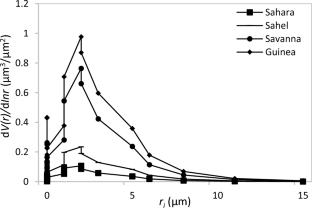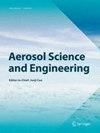Quantification of Aerosol Particle Radiative Forcing Under Cloud-Free Condition During Dry Season Period Over West Africa
Abstract
The significance of quantifying the interaction of other non-dust particles with solar radiation cannot be overemphasized. This paper presents the radiative forcing aerosol effects of some non-dust particles over four different climatic zones of West Africa. Aerosol radiative effects on solar radiation require accurate analysis of optical and radiative properties. Radiative forcing was determined by anthropogenic, dust, marine, and non-dust aerosols governed by their size distribution and concentration. A consistent increase in daily AOD values was observed with decreasing angstrom exponent. Results showed that high negative forcing was experienced in the Savanna and Guinea zones which can be attributed to the addition of black carbon and organic matter aerosols to the heavily deposited dust in the atmosphere. Non-dust and anthropogenic aerosols were found to be major contributors to the high atmospheric absorption. The result also shows that the observed variations in the aerosol properties indicate an increase in the surface cooling in the early days of February. Therefore, a larger quantity of anthropogenic and non-dust aerosols, apart from the predominant dust, could cause and boost the radiative forcing of aerosols over West Africa.


 求助内容:
求助内容: 应助结果提醒方式:
应助结果提醒方式:


